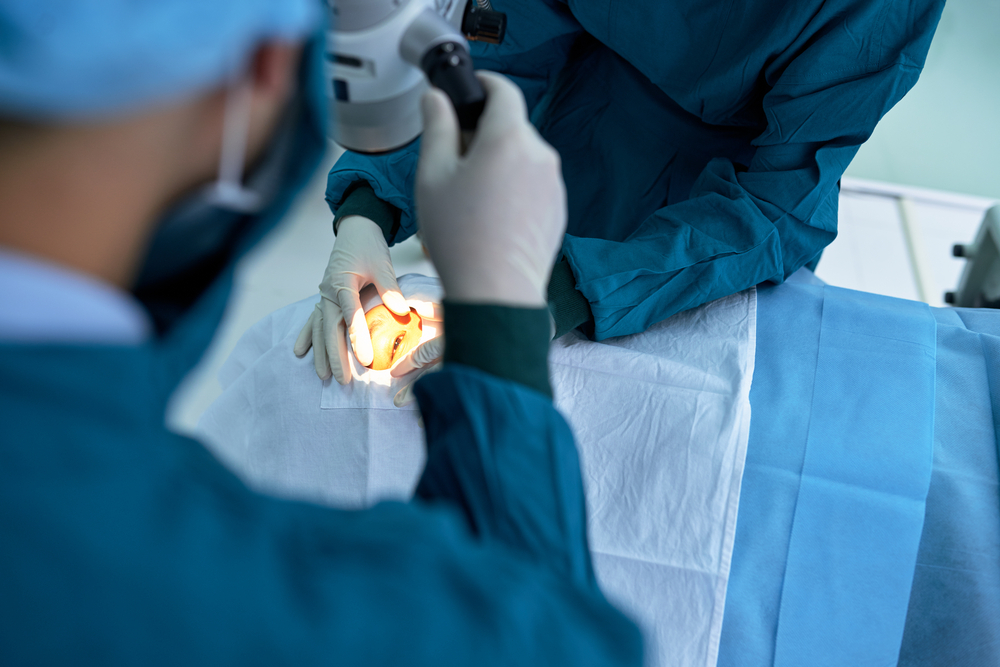
About 24.4 million people above 40 years in the U.S. have cataracts. The American Academy of Ophthalmology further estimates that this number will increase by over 80% to hit 45.6 million by 2050. Cataracts result from the build-up of proteins in the eye lens, making it cloudy. Consequently, they cloud the eye and blocks light, thus causing blurry vision or, even worse, vision loss. In fact, cataracts are the major cause of vision loss in the country.
Luckily, they are removable by surgery, and about three million U.S. residents elect to have cataract surgery every year. The surgery involves replacing the impaired natural lens with an artificial one. Different cataract surgery methods exist, all of which are safe and effective but different in techniques.
The two methods are traditional surgery and laser-assisted cataract surgery.
Traditional Cataract Surgery
Traditional cataract surgery is safe and effective but a bit complex. It involves making a tiny incision on the side of the cornea to extract the clouded lens. The surgeon uses the phacoemulsification method, where they insert a tiny probe into the eye. Ultrasound waves from the devices produce waves that break the lens to suction it out.
After that, the surgeon inserts the artificial lens into the eye using the same tiny incision. The incision is so small and does not even need sutures, and the eye tissue seals and heals on its own. Traditional surgery takes approximately 20 minutes thus performed on an outpatient basis. Besides, patients recover quickly and can resume their normal activities fairly rapidly.
Laser-Assisted Cataract Surgery
Laser-assisted cataract surgery has similar outcomes as traditional surgery but uses a different technique. It breaks up cataracts using a femtosecond laser. The surgeon uses special software to develop a surgical plan with a 3-D eye image called optical coherence tomography (OCT), which has details on the length, location, and depth of the cataract in all planes. This map and the software settings help the femtosecond laser create the incisions and help in the cataract removal.
The laser generates light energy that disrupts the tissue’s borders with less damage to the adjacent tissue. After that, the surgeon removes the old lens and inserts a new one. The recovery time is similar to traditional surgery, and most patients can return to their normal activities rapidly and with clearer vision. You’d be forgiven to think that the laser-assisted surgery method is a recent or modern invention, but it has been around for decades.
Benefits of the Laser-Assisted Approach
When you compare traditional cataract surgery to the laser-assisted method, you will realize the latter has more benefits than the former. For instance:
It does not use blades
Traditional surgery uses a vibrating needle to crumble the cloudy lens and a tiny blade to incise the cornea via which you remove cataracts and insert the replacement lenses. This incision is small, does not require sutures, and the eye tissue heals on its own.
Laser-assisted cataract surgery also involves breaking up, removing cataracts, and replacing the lenses like traditional surgery. However, the procedure does not use hand-held blades but instead a laser to break up cataracts and form a round opening for removing the lens and replacing it with a new one. Also, it also uses ultrasound to remove the cataract instead of blades.
It helps increase accuracy and precision
Other than sizing and fitting the replacement lens correctly, traditional and laser-assisted surgeries aim to ensure the incisions have a perfect circle shape and are in the right position in the eye. There is less need to remove or replace the implant.
However, the procedures differ in that laser surgery gives a more accurate opening in the cornea. The opening may be about ten times more accurate when made via laser than hand. Besides, laser-assisted surgery treats astigmatism, which helps enhance vision over the traditional method.
It helps reduce surgical time and energy in the eye
Both traditional and laser cataract-assisted surgeries are usually painless and have a fast recovery time. But laser surgery takes less energy and energy time, thus helps reduce the recovery time even further. The laser replaces the need for blades to incise and correct astigmatism.
After surgery, the surgeon recommends that the patient have a driver take them home and rest for the remaining part of the day due to the mild sedation they get. However, the patient can resume work and usual activities after a few days as per their responsibilities and visual needs. The doctor advises on the first post-operative appointment regarding specific limitations relating to your surgery.
Who Qualifies for Laser-Assisted Cataract Surgery?
A patient qualifies for laser-assisted cataract surgery only if they qualify as per the Medicare guidelines. Therefore, only certain patients are eligible for it. Ophthalmologists can offer laser-assisted surgery if:
- They detect astigmatism during your appointment
- You want astigmatism rectified during cataract surgery
The laser-assisted surgery creates specific incisions in the cornea to reshape it and correct astigmatism. Besides, a surgeon can offer laser-assisted surgery if you choose a premium lens such as multifocal or toric IOL that corrects astigmatism.
The laser technique allows a better view and mapping of the lens capsule. It also assists the surgeon in placing the opening on the capsule more precisely. That way, you can center the IOL better, which is crucial in replacement involving a premium lens.
Seek Professional Assistance from The Cataract Surgeons
Choosing between treating a cataract via a traditional or laser-assisted surgery depends on what you want from the surgery. A patient may only want to have a clear implant to replace a cataract and later wear glasses. Others are willing to pay more to have the best possible vision and avoid using corrective glasses.
As you weigh the options regarding whether to go for traditional or laser cataract-assisted surgery for a cataract, you need to reach out to an eye specialist for professional assistance. At The Cataract Surgeons, we have experienced professionals who provide you with expert information to help make the right decision. Reach out to us today; we’re always happy to help.



